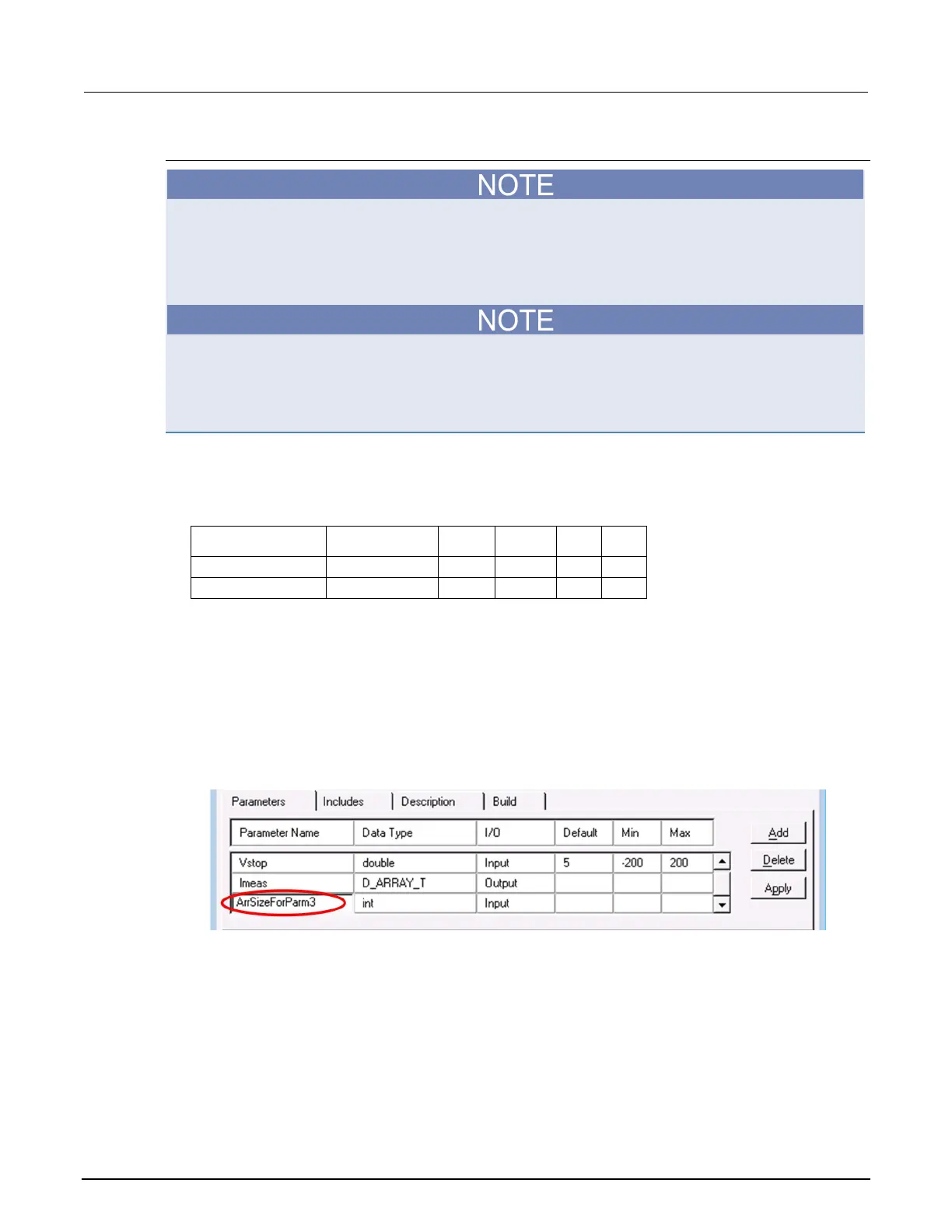8: Keithley User Library Tool (KULT) Model 4200A-SCS Parameter Analyzer
8-30 4200A-901-01 Rev. C / February 2017
Entering the VSweep user-module parameters
This example uses the double-precision D_ARRAY_T array type. The D_ARRAY_T, I_ARRAY_T, and
F_ARRAY_T are special array types that are unique to KULT. For each of these array types, you
cannot enter values in the Default, Min, and Max fields. On the scroll bar in the Parameters tab area,
there is a space below the slider. This space indicates a hidden fourth line of incomplete parameter
information for the array-size parameter specification.
When executing the Vsweep user module in a UTM, the start and stop voltages (Vstart and Vstop)
must differ. Otherwise, the first return statement in the code halts execution and returns an error
number (-1). When a user module is executed using a Clarius UTM, this return code is stored in the
UTM Data worksheet. The return code is stored in a column that is labeled with the user-module
name.
To enter the required parameters for the code:
1. Click the Parameters tab.
2. Enter the information for the two voltage input parameters, as shown in the following table. Click
the Add button before adding each new parameter.
Parameter name Data type I/O Default Min Max
3. Click Add.
4. On the third line, enter the following measured-current parameter information:
Parameter Name: Imeas
Data type: D_ARRAY_T
I/O: Output
5. Scroll down to display line 4 of the Parameters tab area. KULT enters the array size parameter in
this line automatically for the array that is specified on line 3, as shown in the following figure.
Figure 440: KULT-entered array-size parameters
6. In the 4th line, under Parameter Name, change ArrSizeForParm3 to NumIPoints. Note that
the default Parameter Name entry is only a description of the required array size parameter. You
must replace it with an appropriate array size parameter, as required by the user module code.
7. Leave the Data Type and I/O entries as is.
8. In the 4th line, under Default, enter the number 11 for the default current-array size. You can also
add Min and Max array sizes if needed.
9. Click Add.

